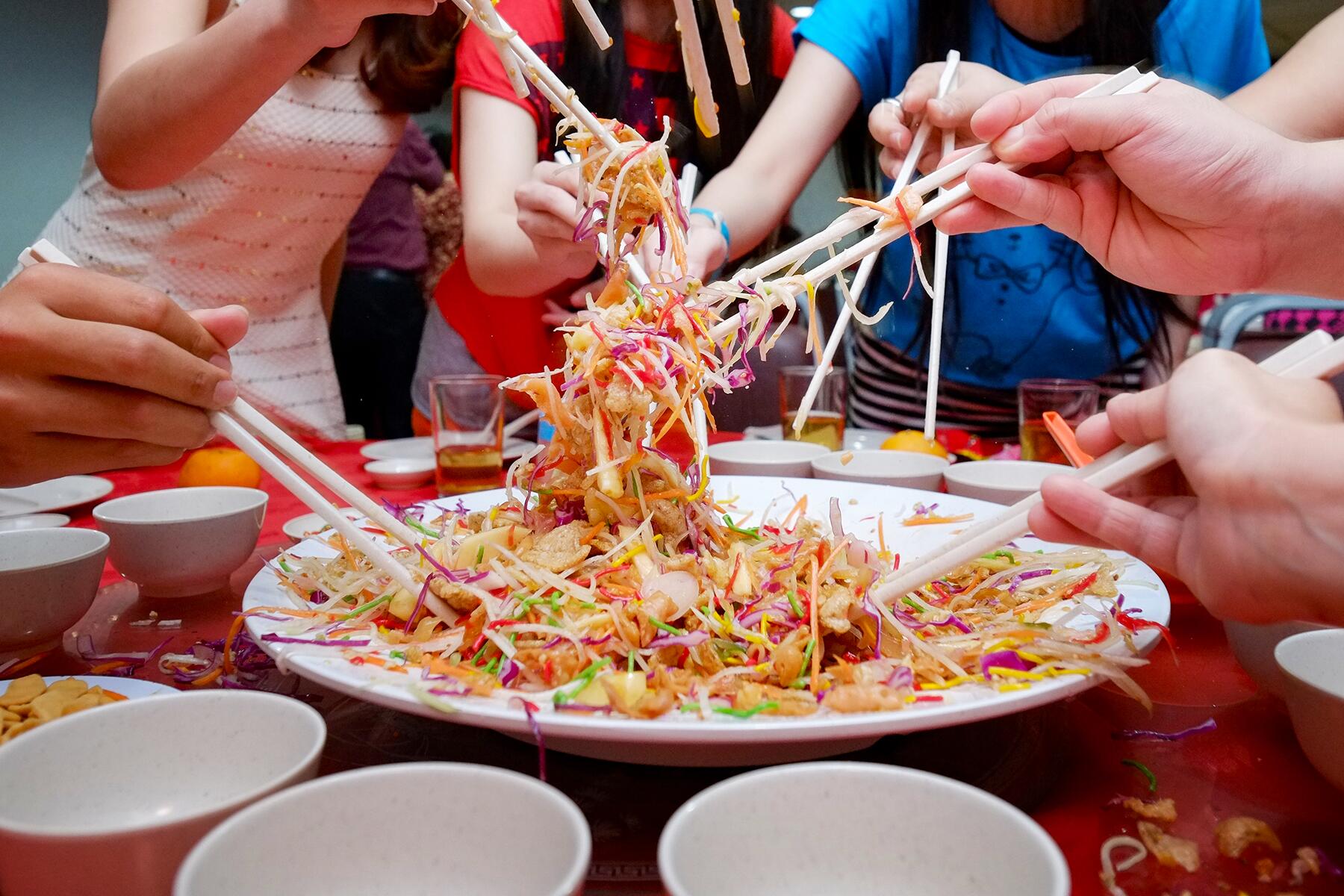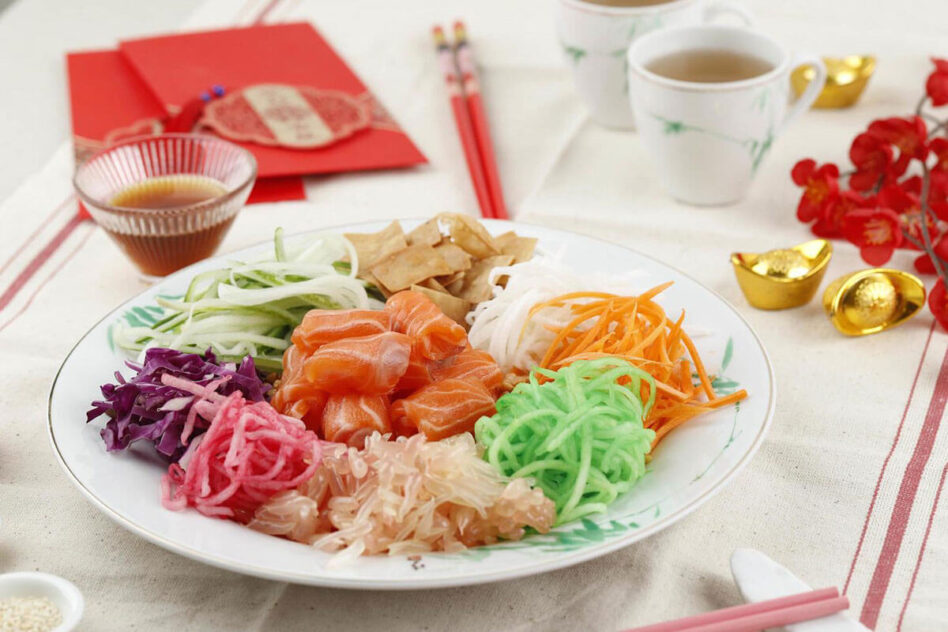
Yee Sang is more than meets the eye
By YS Chan

MY name is Yet Sang, but I do not have a great affinity with Yee Sang, which is the Cantonese pronunciation for two Chinese characters.
Separately, they mean “fish” and “living or growing”. Combined, it is the name of a popular dish available during the Chinese New Year period.
Some Chinese restaurants offer it from as early as a few days before Chinese New Year and up to the weekend after the 15th day to cash in on the once-a-year opportunity. It is a good example of traditions being popularised through commercialisation for profit.
The modern version of Yee Sang is generally believed to have been created and brought into vogue in the 1940s by Transport Minister Anthony Loke Siew Fook’s grandfather Loke Ching Fatt, who was operating the Loke Ching Kee restaurant in Seremban.
The dish is popular in Malaysia and Singapore, as these two nations have many shared heritage, especially in food and culture, with families and relatives living in both countries. Yee Sang is hardly found in China, Taiwan, Hong Kong or Macao, as it is not a traditional Chinese dish.
Therefore, Yee Sang is a type of Malaysian ‘rojak a’nd has been embraced as part of Malaysian culture. The ingredients can be consumed by almost everyone, as it is made with strips of raw fish, shredded vegetables, sauces such as sweet plum, and condiments include vinegar.
The common ingredients include shredded cucumber, carrot, radish, papaya, pickled ginger, crackers, sesame seeds and crushed peanuts, plus oil and salt. The pièce de résistance is not the consumption of the dish but in mixing them up simultaneously by all seated around the table.

MY name is Yet Sang, but I do not have a great affinity with Yee Sang, which is the Cantonese pronunciation for two Chinese characters.
Separately, they mean “fish” and “living or growing”. Combined, it is the name of a popular dish available during the Chinese New Year period.
Some Chinese restaurants offer it from as early as a few days before Chinese New Year and up to the weekend after the 15th day to cash in on the once-a-year opportunity. It is a good example of traditions being popularised through commercialisation for profit.
The modern version of Yee Sang is generally believed to have been created and brought into vogue in the 1940s by Transport Minister Anthony Loke Siew Fook’s grandfather Loke Ching Fatt, who was operating the Loke Ching Kee restaurant in Seremban.
The dish is popular in Malaysia and Singapore, as these two nations have many shared heritage, especially in food and culture, with families and relatives living in both countries. Yee Sang is hardly found in China, Taiwan, Hong Kong or Macao, as it is not a traditional Chinese dish.
Therefore, Yee Sang is a type of Malaysian ‘rojak a’nd has been embraced as part of Malaysian culture. The ingredients can be consumed by almost everyone, as it is made with strips of raw fish, shredded vegetables, sauces such as sweet plum, and condiments include vinegar.
The common ingredients include shredded cucumber, carrot, radish, papaya, pickled ginger, crackers, sesame seeds and crushed peanuts, plus oil and salt. The pièce de résistance is not the consumption of the dish but in mixing them up simultaneously by all seated around the table.

(Image: Plated Asia)
As it is the first dish to be served and none of the chopsticks had been used to put food into the mouth yet, the diners’ chopsticks are used to pick up the ingredients, carefully raise them as high as possible before letting the food drop back to the plate, commonly described as tossing.
In doing so, the ingredients get mixed up. It is not the case when the cooks are too busy and leave the work to the diners eagerly waiting for food to be served. I do not like to describe the action as tossing and diners who do not understand what they are doing would act mechanically.
Although they should be jovial when lifting up the ingredients, they should not be overly playful or rough, as this will result in ingredients falling outside the plate and be discarded.
They should focus on raising the ingredients as high as possible before letting them fall back inside the plate.
It is a meaningful exercise if one understands the significance. For example, there is double meaning in using raw fish. Raw in Cantonese and Hakka is pronounced as Sang, and fish rhymes with another word meaning abundance of wealth.
Hence, the ceremony of lifting up the ingredients and consuming them signifies growth of great abundance in wealth over the coming year. The higher you lift up, the more prosperity, success and hope you will bring to your life. The sweet sauces are meant to add sweetness to life.
By the way, those who pray at Chinese temples or in many Chinese homes would ask for peace, health and prosperity in this life, not about the afterlife.
It is more of a cultural practice that helps them to be more focussed in their aspiration for a better life for themselves and their loved ones.
A decade ago, I worked closely with the Land Public Transport Commission. One day in its KL Sentral office, I was invited to the pantry to join a group of staff there in tossing Yee Sang.
I soon realised that I was the only ethnic Chinese and Yee Sang has become a Malaysian tradition.
It may have been a private affair participated by just a few progressive professionals, but it was more meaningful to me than those staged for publicity, such as a supermarket chain that organised a 1,211m long, 60cm wide, and 6,200kg snake-shaped Yee Sang tossing in Kepong on Jan 7. – Feb 17, 2025
As it is the first dish to be served and none of the chopsticks had been used to put food into the mouth yet, the diners’ chopsticks are used to pick up the ingredients, carefully raise them as high as possible before letting the food drop back to the plate, commonly described as tossing.
In doing so, the ingredients get mixed up. It is not the case when the cooks are too busy and leave the work to the diners eagerly waiting for food to be served. I do not like to describe the action as tossing and diners who do not understand what they are doing would act mechanically.
Although they should be jovial when lifting up the ingredients, they should not be overly playful or rough, as this will result in ingredients falling outside the plate and be discarded.
They should focus on raising the ingredients as high as possible before letting them fall back inside the plate.
It is a meaningful exercise if one understands the significance. For example, there is double meaning in using raw fish. Raw in Cantonese and Hakka is pronounced as Sang, and fish rhymes with another word meaning abundance of wealth.
Hence, the ceremony of lifting up the ingredients and consuming them signifies growth of great abundance in wealth over the coming year. The higher you lift up, the more prosperity, success and hope you will bring to your life. The sweet sauces are meant to add sweetness to life.
By the way, those who pray at Chinese temples or in many Chinese homes would ask for peace, health and prosperity in this life, not about the afterlife.
It is more of a cultural practice that helps them to be more focussed in their aspiration for a better life for themselves and their loved ones.
A decade ago, I worked closely with the Land Public Transport Commission. One day in its KL Sentral office, I was invited to the pantry to join a group of staff there in tossing Yee Sang.
I soon realised that I was the only ethnic Chinese and Yee Sang has become a Malaysian tradition.
It may have been a private affair participated by just a few progressive professionals, but it was more meaningful to me than those staged for publicity, such as a supermarket chain that organised a 1,211m long, 60cm wide, and 6,200kg snake-shaped Yee Sang tossing in Kepong on Jan 7. – Feb 17, 2025
YS Chan is master trainer for Mesra Malaysia and Travel and Tours Enhancement Course and an Asean Tourism Master Trainer. He is also a tourism and transport business consultant.
***
kt comments:
Correct, and what I have been preaching all the while, that yee sang should not be about the reckless, 'play-play' and profligate 'tossing' of the food ingredients, as has been witnessed by us.
By 'profligate', meaning 'recklessly extravagant or wasteful in the use of resources', I have been urging for the careful stirring of the ingredients in a way so that the participants of the so-called 'tossing' can consume all the food within the bowl.
I agree fully with Master YS Cahn that the word 'tossing' is NOT appropriate and which might have led to the INCORRECT impression that's what the (careful) mixing of the 'yee sang' ingredients is ALL ABOUT.
No comments:
Post a Comment